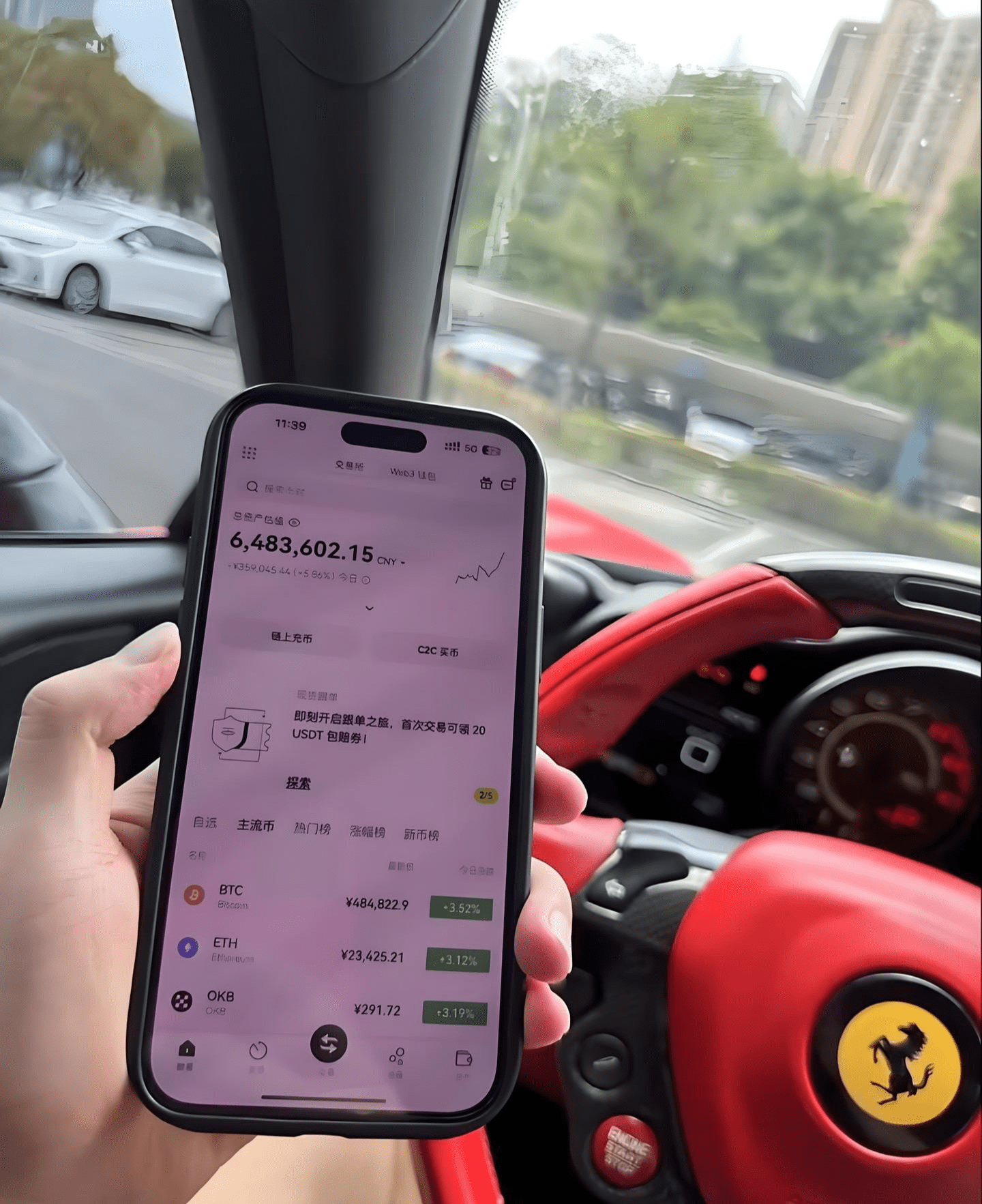I have been trading cryptocurrencies for over ten years now. From experiencing liquidation to achieving financial freedom, I support my family through trading. By 2024, my capital has multiplied by 50 times. If it weren't for two occasions where I withdrew funds to buy a house, it would have been 85 times.
Today, I will share my trading strategies and insights with friends in the cryptocurrency space.
There is a saying: standing on the shoulders of giants can save you ten years of struggle.
At the end of the article, I will also discuss the most important trading methods.
For those who are fortunate enough to see this and wish to improve their cryptocurrency trading skills, be sure to read carefully and consider bookmarking this!

Today, I spent four hours organizing some commonly used and treasured trading strategies to share with fellow cryptocurrency enthusiasts. I hope to help everyone quickly build a solid foundation and continue to improve!
For newcomers in the cryptocurrency space, mastering some practical trading techniques is crucial. Below are insights shared by a cryptocurrency winner worth over a hundred million.







Big data does not recommend randomly. If you see this, it proves you are in for some luck. Leave a comment saying, 'Fortune is coming my way; everything will go smoothly and get better.' You will see results within three months.
The biggest enemy of trading cryptocurrencies is often yourself. The above experiences are derived from long-term testing in the market, and I hope they can inspire you.
If any point in this article resonates with you, please give a thumbs up to support it. Thank you for your attention; let’s walk together on the road to stock market success!
In the cryptocurrency space, there truly exists a trading strategy with a success rate of over 90%. It is simple, practical, and suitable for everyone!
Whether you are trading contracts or spot, it applies to both!
This method has been personally tested: over the course of three years, using this trading strategy, I earned over 14 million USD. Monthly return rate: 155.22%!
$5,000 to $100,000: A guide to aggressive trading with small capital in the cryptocurrency space.
"In three months, $5,000 turns into $120,000."
The secret to flipping small capital is simply two things: focus + compound interest.
1. Military rules that must be followed (line of life and death).
1. Never go all in on a single trade (each time ≤ 20%).
2. Only trade coins with daily volumes over $10 million (to avoid going to zero).
3. Mandatory liquidation at 10 PM daily (to avoid early morning liquidation risks).
2. The best opportunity pool for 2025.
New coin listing strategies.
Only choose top 3 projects launched on Binance/OKX.
Intervene when the turnover rate on the first day of listing exceeds 200%.
Never average down on broken coins (case study: June NOT doubled on the first day).
Target leading coins for retracement.
- Buy in batches when BTC/ETH retraces 15%.
- Use 2x leverage (maximum 3x).
- Immediately stop loss if it breaks the previous low.
3. Three stages of operating for high profits.
Phase 1 ($5,000 → $15,000).
Focus on one cryptocurrency and aim for a 3% swing every day.
- Trade a maximum of three times a week.
Phase 2 ($15,000 → $50,000).
Focus on coins that break through monthly lines (like PEOPLE in May).
- Withdraw 50% of profits to preserve capital.
Phase 3 ($50,000 → $100,000+).
March: $5,000 → $8,000 (long ETH).
April: $8,000 → $21,000 (targeting WIF).
May: $21,000 → $120,000 (fully capitalizing on the NOT event).

How to overcome the fear of loss and achieve stable profits in investment?
In investment, market fluctuations are like unpredictable weather, hard to predict yet real. When the market rises, some become overly excited and chase high prices; when it drops, others panic and despair, frequently cutting losses.
In fact, the true determinant of success or failure is never the market itself, but each individual's fear of loss.
When the fear of loss is too strong, it will 'create mischief' in every fluctuation of the market, exhausting people and making them forget their original intentions. They get lost in short-term rises and falls, yet find it difficult to seize real opportunities.

In fact, these emotional fluctuations are not isolated incidents but real stories experienced by many investors.
Let me tell you a story: After LINK consolidated for three months, it experienced a strong uptrend in November, doubling within ten days. It rapidly rose from $13 to $27.41, and market sentiment soared. A friend of mine had noticed LINK early on but felt there would be a better buying opportunity, so he remained on the sidelines. Later, when LINK rose for three consecutive weeks, he could no longer sit still. His fear of missing out skyrocketed, worried he might miss the upcoming 'bull market,' and on December 8, he put all his funds into LINK at $27. While he was dreaming of doubling, quintupling, or even tenfold returns, the next day the market unexpectedly dropped 30%, pulling back to $19. He was frantic and regretted his impulsive decision, saying, 'If I had known, I wouldn't have chased it!' Unable to bear the heavy loss, he impulsively chose to cut his losses. Later, LINK returned to an uptrend; he watched the price break $30 and kept lamenting, 'If I had known, I shouldn’t have cut my losses!'
My friend's investment experience is actually a recurring scenario in the market and is a typical manifestation of a strong fear of loss. The fear of loss is a mindset caught between the desire to gain and the fear of losing; when one does not have it, they desire it, and when they have it, they fear losing it, so market trends will affect their fear of loss.
From desire to fear to regret, his actions were not based on analyzing market trends but were completely driven by market sentiment. When prices rise, he fears missing out; when prices fall, he fears loss, resulting in a waste of time and money through chasing highs and cutting losses.
Market fluctuations are a rule of the market, but our mindset can determine the final outcome. To overcome the fear of loss, the following three points need to be addressed:
First, develop an investment plan.
For instance, if you had previously used technical analysis to determine buying points and set stop-loss levels, you wouldn't be blindly chasing highs and easily cutting losses. Market fluctuations are normal; understanding the essence of rises and falls is crucial: just because the market is rising doesn't mean it will continue to rise forever, and a downturn doesn't necessarily mean a crash. The purpose of planning is not to predict market trends but to minimize the likelihood of emotional decision-making.
Secondly, let go of your obsessions.
No one can always buy at the lowest point or sell at the highest point. The key to investing lies in capturing the main trend, not every fluctuation. Like my friend, who regretted feeling that he 'didn't earn but lost' because the market rose later. In fact, it was due to excessive expectations of returns, which will only lead to missing the next real opportunity. Rather than getting caught up in immediate gains and losses, it is better to adjust your positions and mindset from a broader perspective.
Finally, learn to review and reflect on your experiences.
Regardless of gains or losses, one must review and summarize experiences, rather than falling into self-blame or complacency.
The true value of investment lies in continuous optimization, rather than the success or failure of one or two operations. Every review is a form of cultivation, an opportunity for growth, helping us better recognize our fear of loss and avoid repeating mistakes.
We cannot control market fluctuations, but we can adjust our mindset through effort. Instead of letting the fear of loss affect us, it is better to transcend the limitations of this fear, and not to make emotional trades based on rises and falls: when facing an uptrend, do not let greed hijack your rationality; when facing a downturn, do not let fear consume your courage. Only then can you truly ride the waves of a bull market, achieving great success and accumulating wealth.
In this world, everything is subject to the 80/20 rule, known as '80% lose money, 1% break even, and 20% make money.' The financial market, including the cryptocurrency space, is no exception; 20% of people hold 80% of the wealth, and those who can profit from trading cryptocurrencies are ultimately few; most players are just fodder.
If you are in a losing state but unwilling to accept it, can't find the reason, and feel confused, it is better to find the cause rather than self-consume. First, think through several questions and find the trends of the cryptocurrency market. Before starting the article, let me pose some questions for everyone to consider:
1. Am I truly among that 20% or that 80%?
2. What qualifications do I have to make money in this industry?
3. Who is making money in this industry?
4. Have I studied seriously, and can my knowledge exceed that of most investors?
5. Do I have the ability to think independently?
6. Is my investment strategy merely to follow the prompts of friends, bloggers, or KOLs?
7. In the face of market manipulation, can I remain calm amidst the chaos?
Of course, there is no need to belittle ourselves; this is a law of nature, not our fault, and we cannot change it. If the capital market one day turns into a place where most people make money and a few lose, then that would be strange. The market is merely a trading channel; it does not generate profits itself. For example, with Bitcoin, there is no profit generated during the buy-sell process.
Making money from trading cryptocurrencies is essentially the profit made from price differences during transactions. In simple terms, if you make money, it means someone bought at a high price from you, and for you to profit, someone else has to lose.
Suppose there are ten participants in the cryptocurrency market, each with $10.
If only a few people are making money, and one of them earns $2 from each of the other nine, that person will have $28, while the other nine will have $8. The game can continue. If most people are making money, with nine people earning $2 from one person, those nine will have $11, and one person will not only lose everything but will also owe $8, making it impossible for the game to continue.
If a minority makes money, the market can be sustainable; if a majority makes money, the market will collapse.
It’s like the lottery: if most people can win, the lottery company cannot continue. Only when the majority loses can a few win, allowing the lottery company to operate consistently.
Therefore, the cryptocurrency market will use every means possible to make the majority of people lose money. How can one become part of the minority that makes a profit?
There are many factors that contribute to losing money in cryptocurrency trading. In summary, they can be boiled down to the following six points. As long as you contradict these six points, you can become a unique individual.
1. Severe short-term thinking.
In simple terms, we should look at the long term. What everyone discusses and sees is how much has risen today or how much has fallen tomorrow... rather than where this coin will be in six months or a year. Just look at those in the cryptocurrency space who have achieved financial freedom; none of them made money in three to five days; they all relied on time.
Reasonably allocate your positions, focusing on long-term strategies and using short-term strategies as a supplement. If you can accurately grasp short-term trend changes, you should follow them.
2. Chasing highs and cutting losses.
Chasing highs and cutting losses is a mistake every cryptocurrency investor makes. When they see a coin surge and everyone is discussing it, they buy in without thinking, only to find themselves trapped with a 10% or 20% loss and unwilling to cut their losses, waiting for the day they break even. When the price continues to drop and they incur losses of 50%, 60%, or even 70%, they feel the coin is a failure and hastily cut their losses to rock bottom.
Repeating this step and chasing highs and cutting losses does not have a good solution; it is a psychological issue.
3. Insufficient understanding.
Many people do not think critically before investing; they simply follow what others say. Today, a certain influencer says a coin is good, and they buy it immediately! Tomorrow, a rumor says that coin will rise, and they buy it too... As for why this coin is good or why that coin will rise, they have no idea.
This brainless investment approach is bound to lose money; we can use others' understanding as a reference when investing, but we must first establish our own understanding. No matter how great a KOL is, they have already established their positions before you, and after they cut losses, they will remind you only after the fact; you can only help them carry the burden.
4. An overly restless mind.
Impatience seems to have become the norm in the cryptocurrency space. Many people enter this market with the mindset of becoming rich overnight, yet they are not prepared for a total loss the next day, and they lack the ability to become wealthy overnight! Once they buy a coin, they hope that it will rise immediately, double in three days, or multiply tenfold in half a month... If the coin does not rise for half a month or even incurs a loss, they start finding excuses for themselves and begin to curse, blaming the project for poor market management, blaming the whales for dumping, and complaining about influencers' inaccurate predictions...
Having seen too many stories of overnight wealth in the cryptocurrency space, and with almost every time period seeing the emergence of tenfold or hundredfold coins, subconsciousness leads people to treat this market as a 100% sure-win casino, believing that simply buying coins will yield profits, rather than seeing it as a real financial market, where bloodshed is the essence.
5. Not learning.
A media outlet previously conducted a survey on investors' understanding of digital currencies. Among 778 randomly selected digital asset investors, fewer than 10% could quickly and accurately describe 'what Bitcoin is,' and only 17 could accurately explain 'what blockchain technology is.'
Although the sample size of this data is small, it is sufficient to illustrate the current state of investors in the cryptocurrency space. If you don’t even understand what you are investing in, how can you have faith? Without faith, no matter how low the price or how good the coin is, how can you hold onto it?
Learning is an eternal and unchanging wealth; only continuous learning can prevent being harvested.
6. Lack of sound investment philosophy.
Most people do not have a complete investment plan before investing and simply follow their intuition. This blind investment approach is likely to result in losses when unexpected situations arise. Only by summarizing a set of investment strategies that suit us can we respond to various situations, treating both rises and falls calmly, which at least allows us to maintain a stable mindset and avoid making wrong choices due to emotional influences.
Finally, I advise everyone not to be arrogant after making money. Suppose your ancestors’ grave is emitting green smoke, and you hit a hundredfold coin; you should find ways to protect your wealth. That isn't your skill; money earned by luck can be lost by skill! Stay away from easily brainwashed individuals who easily talk about surpassing Bitcoin and blockchain revolutions, while they don’t even understand what a block is. This is a typical example of a one-track mind. If you tell them the truth, they will say you lack understanding.
Three years to enter the industry, five years to understand it, ten years to rule it.
Trading isn't about getting rich overnight but rather achieving reasonable profits that are long-lasting, stable, sustainable, and have a high probability, allowing one to continuously acquire wealth.
#山寨季何时到来? $ETH #币安HODLer空投ERA #比特币巨鲸动向



